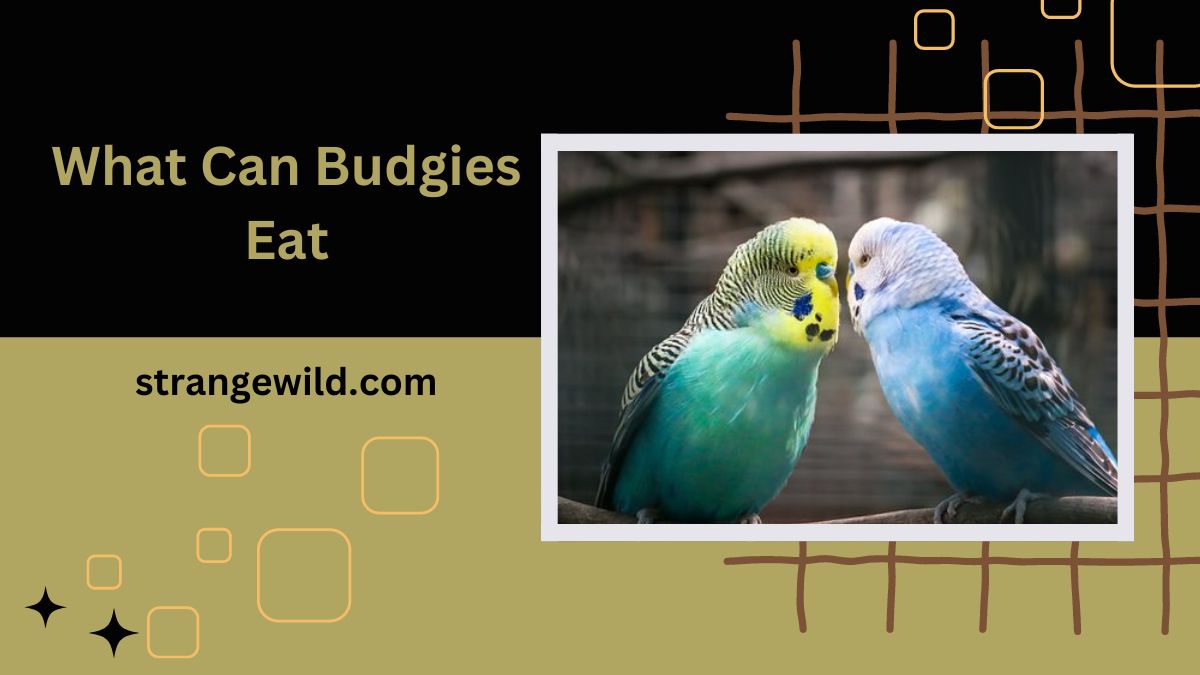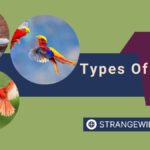What Can Budgies Eat? Healthy Food For Budgies
What can budgies eat? Budgies were typically fed primarily seed mixtures until a few decades ago. Trill is the favorite, with a cuttlefish bone attached to the cage bars and perhaps a millet treat. Then it was over. Many veterinarians now prefer using pellets, so you will need to decide whether to use seeds, pellets, or your own combination as the main component of the diet. According to current feeding guidelines, fresh foods should make up 40% of the diet. Choosing the right cuisine requires extensive research and guidance from reliable sources. Can parakeets eat mangoes?
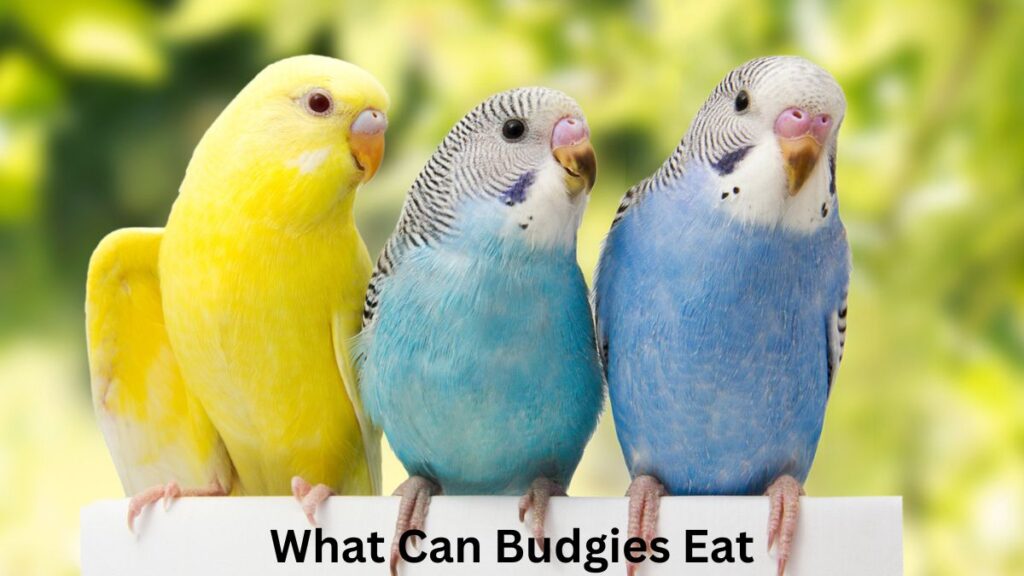
Which types of fruit can budgies eat?
Bananas, strawberries, apples, grapes, oranges, peaches, blueberries, pears, raisins, mango, melon (of all kinds), nectarines, cherries (make sure the stone is out), and kiwis are all edible to birds. Also popular are fruits from the tropics. Can parakeets eat oranges
What types of green salad can budgies eat?
You might want to provide tiny servings of pepper, lettuce, beetroot, tomato, rocket, and cucumber.
What types of vegetables can budgies eat?
Birds can eat. Your budgie would just desire a teaspoonful of the following: green beans, carrots, peas in the pods, cabbage, cauliflower, sweet corn, and sweet potatoes. All of these should be lightly cooked. There is debate on the wisdom of avoiding foods like onions, mushrooms, and garlic. With them, some of us have found success. Some do not. It is true that some foods, like parsley or fruit pith, can be harmful if consumed in large quantities, but not when consumed in tiny ones. Unless your fresh food is organic or homegrown, washing thoroughly is a wise precaution. Can parakeets eat apples
Can’t food and drink buds have?
Fried food, salt, crisps, bacon, coffee, caffeinated tea, alcohol, herbal teas, biscuits, pastries, cakes, chocolate, pizza, chips, bread, vanilla, peanut butter, and cheese are things you shouldn’t give your parrot. These foods aren’t particularly healthy for people either.
However, most parrots like these human meals, just as young children do with junk food. Try to keep inappropriate food out of sight as a remedy. Don’t be upset with yourself if a tiny part of a cookie or a chip is taken or offered if she’s out of her cage. Our family meals significantly improved once we started having free-ranging parrots around during meals.
Pellets or a seed mix
In the USA, pellet diets for birds in captivity first appeared. Nowadays, avian veterinarians advise using pellets since a high-quality pellet is thought to deliver nutrition, minerals, and vitamins that a novice cannot match. Veterinarians prefer pellets because seeds lack other essential nutrients and have too much fat for wellness. Several producers produce pellets for budgerigars and other small birds.
The easily digested, nugget-shaped pellets are manufactured from grains and vegetables. The supplemented formula better satisfies your budgie’s varied nutritional needs than an all-seed diet because it contains key minerals and vitamins. The right pellet is an intelligent decision for finches, canaries, and budgies. Make sure the pellet you choose doesn’t include any artificial preservatives and purchase it in minimal quantities.
One tablespoon per day would be a useful serving for a budgie, with fresh food making up the majority of its diet. Often around the size of a thumbnail. If your bird was introduced to a diet based on seeds rather than pellets when it was weaned, you can help her adjust to the transition by gradually replacing the food she is presently eating with the food you want her to eat. With patience, it is possible.
If you are feeding seeds and don’t want to switch, you can give her a diet consisting of 40–60% sprouts and seeds and the remainder of a variety of fresh foods.
Which seeds can budgies eat too?
The majority of budgie owners purchase pre-made seed mixtures for their birds, which is OK as long as you are certain the seeds are fresh because they have a short shelf life. Foods that have passed their sell-by date have minimal nutritional value. Checking to verify if the seeds are fresh is simple. Let some seeds soak all night. Spread them out on damp cotton wool or kitchen paper after rinsing and draining them, and keep them warm for 24 hours. Throw away any seeds that sprout at a rate of less than 50%. 90% or more of healthy seeds will germinate.
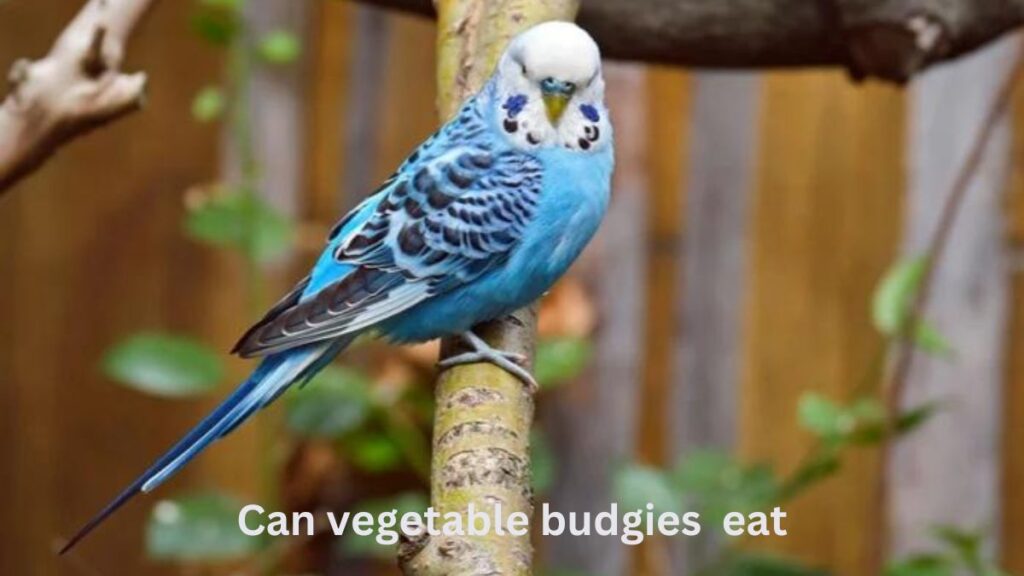
Can grass seeds eat bugs?
50% of your bird’s diet is made up of both grains and grass, which belong to the same category. In the wild, they constitute the budgie’s main source of food. Here are several types of grass that you may gather for free and feed the parrots if you have a garden or access to open regions.
Your pet parrot will select the seeds from the grass you provide for her.
- Yearly meadow grass
- Field foxtail
- Cocksfoot grass, often known as orchard grass
- Evergreen ryegrass
- Known also as barren or infertile brome, poverty brome
- Shaky bluegrass
- Soft chess, or soft brome
- Velour fescue
- Timothy weed
- Meadow soft grass, velvet grass, and tufted grass are all names for Yorkshire grass.
Bird grains
You can give your bird these grains to eat: wheat, oats, quinoa, canary seed, rye, sweetcorn kernels, amaranth, barley, buckwheat (whole), and sweetcorn kernels.
Seed budgie herbs
A decent seed mix can contain up to 25% seeds made from herbs. Herbs can be kept in airtight jars and distributed in a variety of ways, including yellow, red, and black mustard, radish, red clover, groundsel, chia seeds, dill, fennel, fenugreek, kale, and coriander leaves.
Budgie seeds with lots of fat
Many unhealthy seeds are favorites of budgies. Due to their high-fat content, the following seeds must be handled with caution: Sunflower, flax, hemp, millet, sesame, rapeseed, and pumpkin (soaked and given time to germinate first). Although rapeseed, millet, and hemp are grains, they are included here due to their high-fat content. Particularly, budgies, like some Amazons, are prone to obesity, which reduces their lifespans.
Bird legumes
Beans and peas both contain a lot of protein. They can be harmful if used in excess because they might cause hormonal behavior. In a handmade seed mixture, using one or two sprouted legumes should be acceptable.
Budgies can use these but never feed them raw.
- Chickpeas
- White-eyed peas
- Peas, green
- Lentils (yellow, green, black, NOT split) (yellow, green, black, NOT split)
- The mung bean
- Crimson peas
What is the ideal calcium source for Budgies?
Under normal circumstances, the best calcium source is cuttlefish bones. It gives them much more pleasure than a few drops of calcium given to water or a moist diet, and parrots adore chewing on cuttlefish bones. Although you should always be careful not to overfeed vitamins and minerals, you may need to utilize more calcium in the form of supplements if your birds are breeding.
Birds and water to drink
Several caregivers choose bottled water. Many people also choose to add a few drops of cider vinegar. Fresh water should be provided daily, and more frequently in hot weather or aviary settings.
Mealworms, poultry, and eggs for budgies
Some budgies like dried or live mealworms if you want to offer an occasional treat. However, a budgie will obtain adequate protein from a pelleted diet. Additionally, once or twice a week, a little piece of chicken or meat or an occasional nibble of a hard-boiled egg can be given. Keep in mind that you should only provide small doses.
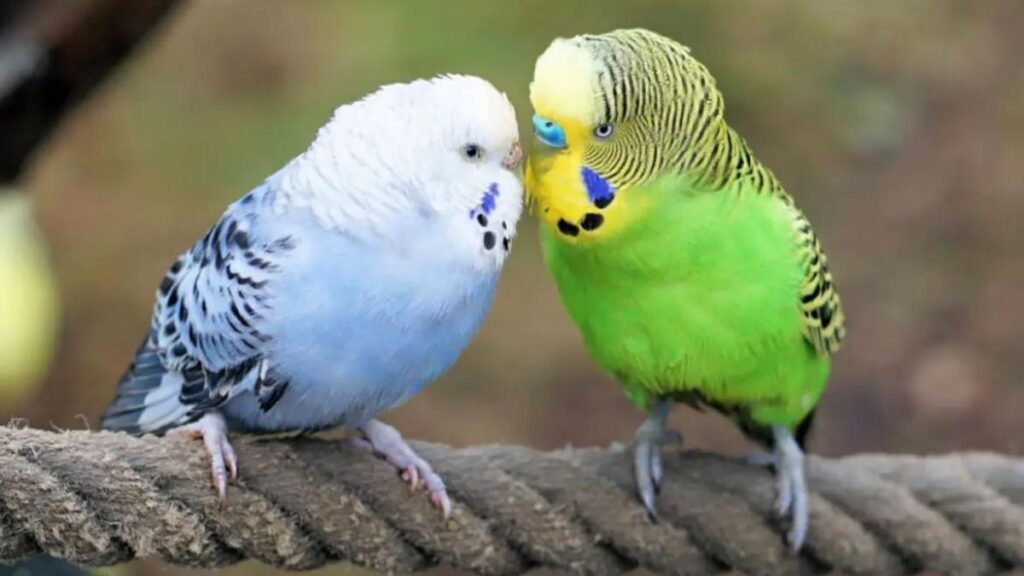
Which types of oily seeds can Budgie eat?
Oilseeds are a favorite of budgies, but if there are too many in the mixture, they will consume them at the expense of other seeds. Keep them to a minimum—no more than 10% of the total seed offering—as their oiliness makes them the budgie equivalent of burgers and chips. It is never advisable to roast the seeds. Make sure you just purchase tiny amounts of oilseeds because they do not store well.
Generally speaking, anything older than three months will be rotten. Although rapeseed, millet, hemp, and niger are technically legumes, they are included here due to their high-fat content.
- Flax (ineffective for sprouting since they have a slimy surface that budgies don’t like)
- Hemp (bashed a little to break through the hard shells.)
- Millet
- Niger (or Nyjer) (or Nyjer)
- Poppy
- Pumpkin (soaked and allowed to germinate first) (soaked and allowed to germinate first)
- Rapeseed
- Sesame
- Sunflower
What do baby budgies eat?
Here is an appropriate recipe from a top-notch website. Although it is not necessary for routine care, it is beneficial for young birds, breeding birds, molting birds, and sick birds.
- One egg with its shell
- A single tablespoon of cooked brown rice
- One teaspoon millet
- 1 tablespoon milled mixed seeds OR crushed budgie pellets
- 2 tablespoons of mixed fruit and vegetables (chopped and grated)
The egg should be boiled for 15 minutes, and then the shell should be broken up. Chop the egg finely, combine the ingredients, and serve chilled. Although the fruit is optional, some budgies will accept the mixture more readily if it has a sweet undertone. However, resist the urge to add honey or other sweeteners, and ignore any recipes that claim a boiled egg and a few digestive sweet biscuits would suffice. Due to the additional sugar, salt, and fat in biscuits intended for human consumption, no biscuits are suitable for budgies.
What should I feed breeding budgies?
Both parents of your budgies require enough calcium if they are in breeding mode. The hen has more requirements than the cockbird, and birds need sunlight to be able to absorb calcium from cuttlefish or grits. A liquid or powdered form that also contains vitamin D3 can be sprinkled over soft food and seeds if your parrots are kept entirely inside. When used in moderation, calcium products have no negative consequences. The recipe is also available on the previously mentioned Omlet website. The food is more specialized if you want to breed your budgies than what we’ve covered here.
How much should a budgie be fed?
15 or 16 grams of food plus 3 or 4 grams of treats, such as almonds, sunflower seeds, or a piece of human food, would be a reasonable serving size for a budgie. Just like humans, different birds have different dietary requirements and preferences. The budgerigar will stay healthy as long as the dish is empty if it gets enough exercise and you like to be generous.
How frequently should a budgie be fed?
First choice: Food for the day is placed in a dish and kept there all day. Throughout the day, during training sessions or time spent outside the cage, treats are offered.
Second choice: The meal is divided into two bowls and fed twice daily; the morning bowl should be removed after 15 to 30 minutes.
In hot weather, when fresh food can spoil, this can be helpful. Feed dry food in the afternoon and fresh food in the morning. Never layer fresh food on top of stale food, as hygiene is crucial. Garden birds will finish what our house birds leave behind.
Can two budgie pairs coexist peacefully?
Birds live happier lives when kept in pairs, which is the current trend. When they must be left alone, this helps them exhibit more natural behaviors around other birds. Birds will make friends with different species but prefer to be with members of their own kind.
Exercise: What can budgies eat?
The amount of exercise your parrot receives will significantly affect how much food she requires. I think little birdcages are frequently too small. Undoubtedly, if you have tame budgies, you will never get tired of watching them fly around in aviaries or rooms while being trained to settle on your hand.
A guide to budgie sex: What can budgies eat?
Visual sexing: Over a 12-month period, mature hens and cocks exhibit some physical changes. The head is typically smaller on the female. In a hen, the cere—the little tuft of feathers above the beak—is brown. It is blue in cockbirds. The legs and feet of a hen will have a brown tint; however, a cockbird will have a blue tint. These characteristics have not yet developed in young birds.
There are various effective ways to get sex with young birds:
You can have your veterinarian test your feathers, or you can get a kit from the lab, pluck the feathers yourself, and send them in. I’ve used this technique successfully for years because the instructions are basic and clear. Additionally, a few drops of blood will provide sufficient DNA for testing.
You can get a kit to draw blood at home and send the findings to the lab if you feel confident enough. Testing newly hatched chicks’ eggshells is an additional technique. Chicks leave some DNA in the shattered pieces of eggshell as they hatch.
The lab will do tests on eggshells if you can obtain some and are confident they haven’t been contaminated. Today, a wide variety of avian species and types can have their sex determined by genetics laboratories. Budgies are on a list of tested bird breeds because they are so widely used as pets.
Did you realize it?
Budgerigars in the wild eat seeds and grass on the ground. Their main sources of food in the wild are grains and grasses. In their native Australia, they travel in flocks that might number in the thousands and cover great distances. A black falcon and budgerigars in Australia manage to capture a sizable flock of budgies.
Conclusion
If you become captivated by the species, Cage and Aviary Birds, a weekly publication that includes all the bird shows and has a free For Sale and Wanted section, will have a wealth of useful information.
The 1925-founded Budgerigar Society focuses on display birds, but it also offers wonderful resources and information for any enthusiastic owner.

